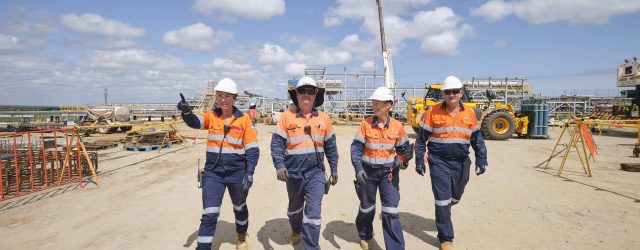Review productivity not big build (opinion piece)
Posted: 6th November 2023
Posted in: Blog

Posted: 6th November 2023
Posted in: Blog
Opinion piece by Jon Davies, CEO, Australian Constructors Association – 6 November 2023
Last week, economists at ANZ Bank looked at the country’s big plans for building things like roads and bridges. They changed their definition of what counts as a ‘major project’ from anything above $100m to anything above $500m because there are so many of them. Prices for these projects are going up, and so many are being done that the International Monetary Fund is telling governments, especially states, to think about putting off or cancelling some of these plans due to their impact on inflation.
The big question remains – which projects should we cancel? This dilemma is one reason why the Federal Infrastructure review is taking so long. With over 500,00 migrants predicted to enter the country this year, we can’t afford to cut back on building schools, hospitals and transport infrastructure. There’s also a housing crisis, so we can’t stop building houses. On top of that, the world is becoming more uncertain, so we can’t reduce defence spending. We’re also falling behind on our goals to reduce carbon emissions, so we can’t stop building things like transmission lines and new energy projects.
The good news is we don’t have to cancel any of these projects. We could afford to build everything we need, without any significant inflationary impact, if we focus on improving the construction industry’s productivity.
Australia’s construction industry directly contributes around $150 billion annually to the economy and indirectly generates an additional $300 billion. It employs over one million full-time workers and even more through the extended supply chain. It is also one of the few industries to actually see a decline in productivity.
An Oxford Economics for the Australian Constructors Association identified that closing the productivity gap between construction and other major industries would result in annual national savings of $56 billion or $17 billion in NSW, $14 billion in Victoria and $11 billion in Queensland. It would also raise the nation’s overall productivity to levels not seen since the 1990s.
So, what is holding us back? It is certainly not lack of ideas or willingness from all stakeholders to shift the dial. The conventional wisdom is that construction firms are laggards, lacking sophistication and appetite for change. But it is easy to exaggerate construction’s resistance to change, particularly technological change. It is often forgotten that construction contractors were among the earliest adopters of mobile phones. Overwhelmingly, construction workers welcome new tools that make them more productive and safer.
The construction industry’s productivity problem runs far deeper. The key issue we need to address has much less to do with technology than with the industry’s basic operating system. The myopic focus on getting the lowest price at the tender box has driven a race to the bottom that has contributed to an industry that accounts for a disproportionate share of business insolvencies, a worryingly high incidence of suicide amongst its workers, the lowest rate of female participation of any industry and non-existent productivity growth.
It is time for a new operating system that focuses on delivering best value, not lowest cost. The system reboot can start right now. Best value can be achieved by bundling projects into programs of work that replace time spent by multiple bidders procuring individual packages with time spent developing innovation that can be deployed across the program. A great example of this is the Level Crossing Removal Program in Melbourne that is reducing cost and increasing certainty of outcome with each level crossing removed. This approach would be ideally suited to the construction of the new transmission lines and new energy assets required to meet our decarbonisation targets.
Another way to greatly increase productivity would be to use more collaborative forms of contract that enable clients, contractors, designers and the supply chain to work together to address project risks rather than traditional contracts that pit all parties against each other, creating value for nobody but lawyers.
Finally, no discussion on productivity can be had without discussing industrial relations. Construction wage growth has consistently outstripped inflation whilst overall productivity growth has gone backwards. This is quite simply untenable. In this age of workplace flexibility, why is it that construction workers on many projects are still forced to take their rostered day off on the same day, thus shutting down the project on that day?
Improving construction productivity is literally a nation-building priority.
The only way we will be able to deliver the infrastructure the nation requires is by getting more productive, and doing more with the resources we already have. We need a 10-year National Construction Strategy that optimises how projects are procured, creates a national digital alliance and improves the skills of all construction workers. So instead of focusing on where to cut, let’s think big on productivity. A productive and profitable construction industry is in everyone’s interests and should be a priority for all governments.